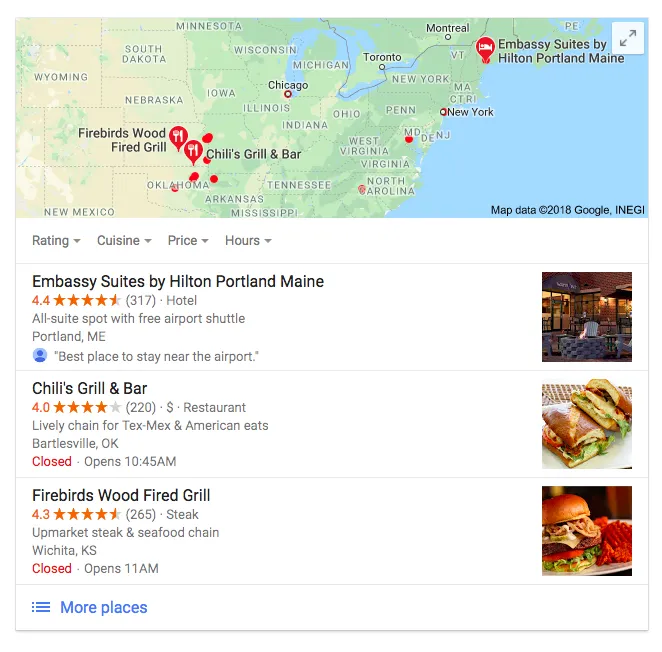Last Updated on: 22nd April 2024, 11:48 am
It is imperative that your business makes the transition to voice search because it is changing the way people find businesses. This article will give you 5 Proven steps on how to get your business found on voice search.
Online search is evolving greatly because of voice search. Voice search results often vary from normal text searches, causing changes in the way businesses to optimize for search as well. Today, consumers want to be gratified instantly and efficiently, owing to mobile phones. And the introduction of voice search has taken this to a whole level.
Alpine.AI has stated before that:
- Over one billion voice-enabled devices will be circulated by the end of 2018.
- An estimate of over one billion voice searches is conducted every month.
This extremely progressive trend shapes the way businesses approach their local marketing. There are speakers like Amazon’s Echo and Google Home scaling with the Internet of Things (IoT) that enable conversational discovery. Additionally, there are chat-enabled voice assistants like Cortana, SIRI, and the Google Assistant, and voice-activated navigational applications as well.
So, here’s an Important Question: Will Your Business Appear on these Searches?
Here are five important things that can help your business appear in voice search results!
1. Get Your Business Listed to get Found in Voice Search!
The most important part of your online presence is getting listed on all relevant listing sites and directories. Sites like Yelp, Facebook, Yellow Pages, and Google My Business can help increase your online citations and establish a strong online presence. You need to make sure that your listings are consistent and accurate across all these directories.
Here’s a list of things you’ll have to do:
- Make a list of all common directories and niche-specific directories to list your business on.
- Create a spreadsheet of all the business information you’ll need to add to these listings. This includes your business name, address, phone number (NAP), business hours, availability of parking facilities, handicap-friendliness, etc.
- Write up a short description (100 words) and a long description (250 words) of your business that you can add to your business listings.
- Add photos of your store location to your listings.
2. Capitalize on Online Business Reviews
If you were to run a search on your voice search of the best Italian restaurants around you, you’ll see that restaurants with an average four-star rating or more rank first. The more positive reviews your business has, the better its chances of appearing on voice search results.
Here are some ideas to generate more reviews for your business:
- Ask your customers. According to a study, 68% of consumers leave business reviews when asked to.
- Make sure that the review generation process is simple and easy for your customers.
- Automate your review management (*Editor’s note: This should link to Simply Be Found’s Reputation Management product/offer)
Another way to capitalize your voice search effort with reviews is the local review schema. Once you add a review schema to your website, you will direct the search engine crawlers to understand your website information and present it on the search engine results page (SERP) as snippets. This is what most search marketers call position zero, that is, your business information will appear on the local-three-pack. Voice search results usually utilize this information to find the best-suited search results.

3. Optimize for Long-Tail Keywords in Your Keyword Research
When you do keyword research for your online ads, look out for long-tail keywords. Simply put, search queries today differ when they are spoken compared to when they are typed out. For example, if you’re looking for interior designers near you, you’ll likely type the best interior designers in New York City. But if you’re using voice search, you might say something like, Ok, Google! Who are the best designers in New York City
This difference in phrasing distinguishes keyword applications for type search and voice search. So you need to find ways to optimize for long-tail keywords in your content. In addition to the long tail conversational search keywords, you can optimize your present keyword strategy for Near Me searches.
This step can turn out to be very lucrative for you because users are using search to find answers to personal queries. Let me explain! Imagine you’re the owner of a beauty salon and you’re trying to market your business better with a strong keyword strategy. You might have to target search queries like, Should I color my hair or How often should I wash my hair. This way when a qualified hairstylist gives out good advice, people will be sure to visit your site and read your content.
According to Think with Google, these personal queries are being conducted with the intention of solving a problem, exploring a certain area, or getting things done.

4. Make Your Website Mobile-First!
To appear on voice search, make sure that your website is optimized to be mobile-first. There are two important reasons for this:
- People are rampantly using mobile devices to conduct voice searches.
- Based on this, Google announced that its search algorithms will primarily begin to use mobile versions of websites as a primary ranking factor.
So make sure that your website’s design is responsive to mobile screens. Here are some things that make your website ready for the mobile-first index.
- You need to make sure that content is optimized for smaller screens and for the fat-finger.
- You’ll need to make sure that your site speed is not cumbered by elements like large images or content that takes longer to load. Your site content should load in less than two seconds.
- If your site has two versions: one responsive on any screen and another that is specifically for desktops or larger screens then make sure the content is the same on both.
5. Leverage Featured Snippets
Featured snippets are information presented in little boxes at the top of the search results.
Most search marketers refer to this as position zero. It is a summarized version of the long-form content that appears as a result of a certain search query. In addition to this, it contains a page title and a link to the page.
This step can turn out to be very lucrative for you because users are using search to find answers to personal queries. Let me explain! Imagine you’re the owner of a beauty salon and you’re trying to market your business better with a strong keyword strategy. You might have to target search queries like, Should I color my hair or How often should I wash my hair. This way when a qualified hairstylist gives out good advice, people will be sure to visit your site and read your content.






